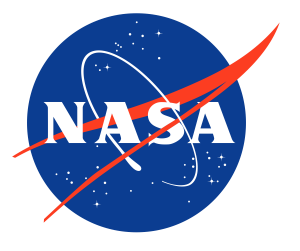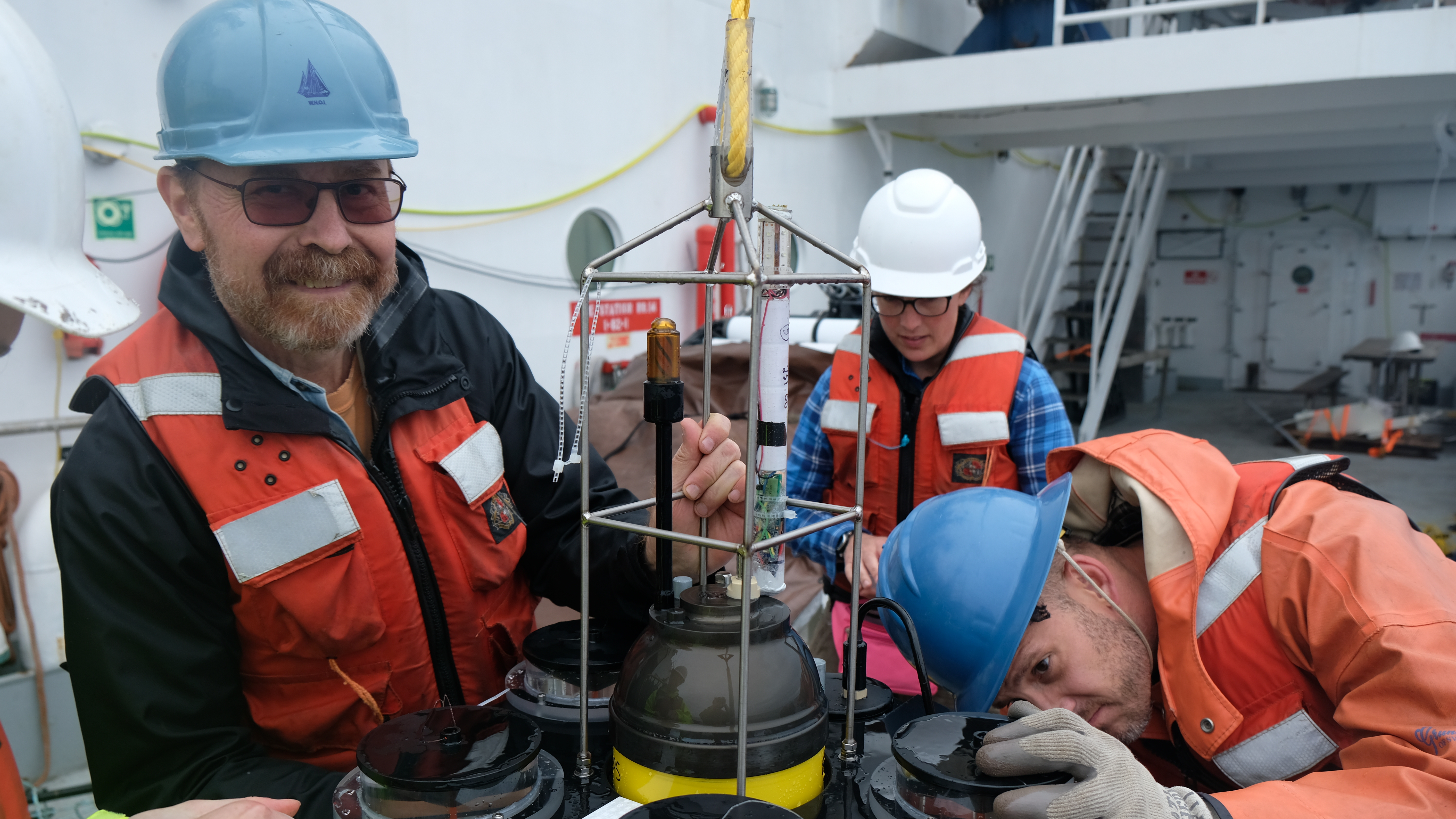
Ocean Exports is a large-scale NASA program with the goal of quantifying the export and fate of upper ocean net primary production using satellite observations combined with ground-truthing in the ocean.
2021 was a momentous year with three (3!!!) ships deploying to the Porcupine Abyssal Plain (Station PAP) in the North Atlantic. The r/v James Cook and r/v Discovery (UK) held EXPORTs scientists and technicians, while a third ship, the r/v Samiento (Virgo, Spain) brought scientists to study aspects of the Twilight Zone in the same area. After being cancelled in 2020 due to Covid-19 it was a feat that proved successful with the most samples we've ever taken on a cruise. More info and data to come, and see the Twilight Zone page for more information about that project.
In August 2018 two ships (r/v Revelle and r/v Sally Ride) departed Seattle to survey and sample across a small area off the coast. This large project involved immense coordination with 16 lead scientists and many associated researcher, technicians, students and post-docs.
Read about experiences on board as written by Cafe Thorium Post-Doctoral Fellow Muntsa in her article Getting Particles in the Northeastern Pacific: An Unexpected Honeymoon.
Also read about Finding Things in the Ocean by Lead Investigator Meg Estapa.
Café Thorium is involved in two projects on these expeditions as described below the publications.
Recent News & Publications
(submitted) Traylor, S., Nicholson, D.P., Clevenger, S.J., Buesseler, K.O., D'Asaro, E., Lee, C.M. (2023) Contrasting Productivity and Carbon Export Regimes from Autonomous Observations in the EXPORTS Field Campaigns. Limnology and Oceanography.
Durkin, C., Buesseler, K.O., Cetinic, I., Estapa, M., Kelly, R.P., Omand, M. (2021) A visual tour of carbon export by sinking particles (pdf). Global Biogeochemical Cycles, 35, e2021GB006985. DOI: 10.1029/2021GB006985
Siegel, D., et al including Buesseler, K.O. (2021) An operational overview of the EXport Processes in the Ocean from RemoTe Sensing (EXPORTS) Northeast Pacific Field Deployment (pdf). Elementa, 9(1), 00107. DOI: 10.1525/elementa.2020.00107.
Roca-Marti, M., Benitez-Nelson, C.R., Umhau, B.P., Wyatt, A.M., Clevenger, S.J., Pike, S., Horner, T.J., Estapa, M.L., Resplandy, L., Buesseler, K.O. (2021) Concentrations, ratios and sinking fluxes of major bioelements at Ocean Station Papa (pdf). Elementa, 9(1), 00166. DOI: 10.1525/elementa.2020.00166.
Estapa, M., Buesseler, K., Durkin, C.A., Omand, M., Benitez-Nelson, C.R., Roca-Marti, M., Breves, E., Kelly, R.P., Pike, S. (2021) Biogenic sinking particle fluxes and sediment trap collection efficiency at Ocean Station Papa (pdf). Elementa, 9(1), 00122. DOI: 10.1525/elementa.2020.00122.
Buesseler, K.O., Benitez-Nelson, C.R., Roca-Marti, M., Wyatt, A.M., Resplandy, L., Clevenger, S.J., Drysdale, J.A., Estapa, M.L., Pike, S., Umhau, B.P. (2020) High resolution spatial and temporal measurements of particulate organic carbon flux using thorium-234 in the northeast Pacific Ocean during the EXport Processes in the Ocean from RemoTe Sensing field campaign. Elementa, 8(1), 030. DOI: 10.1525/elementa.030
Estapa, M., Valdes, J., Tradd, K., Sugar, J., Omand, M., Buesseler, K. (2020) The neutrally buoyant sediment trap: two decades of progress (pdf). Journal of Atmospheric and Oceanic Technology, 37, 957-973. DOI: 10.1175/JTECH-D-19-0118.1
Elucidating Spatial and Temporal Variability in the Export and Attenuation of Ocean Primary Production using Thorium-234
Whew, what a title! This project uses our tried and tested method of using the particle-reactive tracer thorium-234 to quantify the spatio-temporal variability in particle flux from the well lit surface layer to the depths of the ocean.
You can read more about this proposal HERE
Linking Sinking Particle Chemistry and Biology with Changes in the Magnitude and Efficiency of Carbon Export into the Deep Ocean
Another long one. This project is led by Meg Estapa at Skidmore College (former Post-Doc in Café Thorium!). This project attempts to understand carbon sinking in the ocean by collecting particles using traps. The Neutrally Buoyant Sediment Traps, originally designed and used with VERTIGO project will be used to trap particles to study sinking rates and composition of the particles.
You can read more about this proposal HERE
2018 Exports Cruise
The first of two ExPORTS cruises was a HUGE Success! The cruise circled around Station Papa in the North East Pacific 2018 from August 9 to September 13.
- 2 Ships: r/v Revelle & r/v Sally Ride
- 5 NBSTs + 1 Surface Tethered Trap (STT) at 5 m & 50 m depth + 1 wirewalker deployed
- 61 water column profiles at 12 depths
- 12 in-situ pump profiles at 6 depths to collect size-fractionated particles (1-5, 5-51, >51 μm)
We analyzed for:
- 234Th, organic and inorganic Carbon and Nitrogen
- Biogenic silica
- Particulate phosphorous
- 210Po and 210Pb - A proxy for particle export
- Barium isotopes - An emerging geochemical proxy for carbon oxidation
- Lithogenics
New Video: Using Radionuclides to quantify particle flux
A video by WHOI Post Doctoral Investigator Muntsa Roca-Marti explaining findings from the first Exports Cruise.
Funding
This research has been funded by NASA.

Co-Investigators
Thorium-234 Particle Flux
- Claudia Benitez-Nelson (Univerisity of South Carolina)
- Laure Resplandy (Princeton University)
Trapping Particles
- (Project Lead) Margret Estapa (University of Maine)
- Colleen Durkin (Moss Landing Marine Laboratories)
- Melissa Omand (University of Rhode Island)
